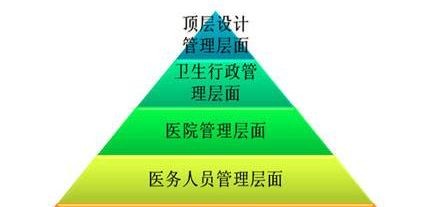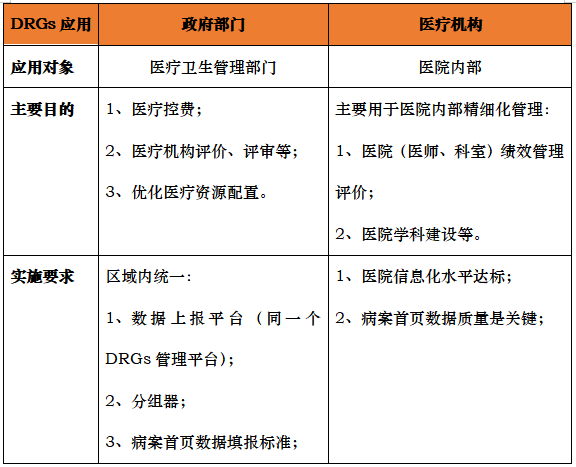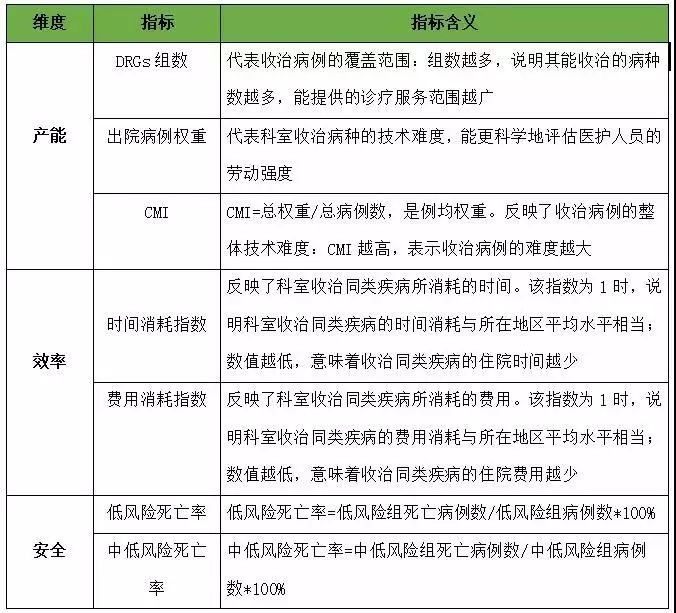DRGs can not only provide a "compass" for regional health managers, draw a circle for regional medical resources, but also create a "foot" for the hospital to measure whether the hospital is operating within the normal range. DRGs are like weights and measures, which provide detailed and multi-dimensional management of hospital operations. This article starts with the essence of hospital management and DRGs, and briefly analyzes how DRGs manage hospitals in a comprehensive manner.

1. The essence of hospital management
Hospital management has two main attributes in nature: one is social attribute, the essence is to save lives, the clinical itself; the other is economic attribute, which is a benign operation, to see whether the financial indicators are healthy and the resource consumption is reasonable.
The current hospital management model is changing from extensive results-oriented management to refined management based on clinical processes. So, how should the hospital achieve refined management? The following three aspects should be considered:
First, the information system (HIT), which is the means of production. All business, management, clinical, patient services, etc. that occur every day belong to the category of means of production. Originally they were manual operations, which can now be completed through the information system.
Second, measurement tools (DRGs), what tools and standards are used to measure hospital management in a unified way? DRGs can scientifically and fairly measure hospital indicators.
Third, the management tool (Performance), management cockpit, high-level decision support system based on ERP.
With the above three tools, hospital management can go from means of production to measurement and measurement to management, to achieve refined management of the whole process.
2. The essence of DRGs
DRGs在整个医疗范围内可分为两大部分

Government departments (regions):
One is to help government management departments to coordinate medical resources. DRGs can provide a "compass" for regional health managers to draw a circle within the entire medical resources.
Hospital organization (hospital):
The second is to help the hospital measure its own resources in the entire medical process, which is equivalent to building a "foot" for the hospital, understanding the hospital's family, and measuring whether the hospital is operating within the normal range.
Terms such as "payment model / budget plan / quality control method" cannot yet comprehensively summarize the meaning of this "foot". In essence, DRGs are a set of "medical management tools".
DRGs provide many management indicators, such as: diagnosis and treatment scope (number of MDC), diagnosis and treatment output (RW weight), disease technical difficulty (CMI), efficiency (cost, time consumption index), safety (medium and low risk mortality), etc. These indicators are centered around the clinic from a management perspective.
DRGs evaluation management indicators

In terms of medical safety, the focus is on analyzing the relevant indicators of mortality. Hospitals can evaluate the medical safety of a department or ward through the mortality-related indicator data of DRGs and formulate improvement measures accordingly.
In terms of medical capabilities, the number of DRG groups (diagnosis and treatment scope), number of cases and total weight (output capacity), CMI (technical difficulty) of each department / ward can be analyzed to understand the ability of each department / ward Level.
In terms of medical efficiency, the cost consumption index and time consumption index can be analyzed. The lower the index, the higher the efficiency of each department, and the lower the time and cost when looking at similar diseases.
3. The core requirements of DRGs
To make good DRGs, there are two key factors:
One is data quality. This mainly refers to the first page data of the medical record. If the data quality is not good, all analyses are invalid. Before the DRGs are applied by the hospital, after collecting the data on the front page of the medical record and the electronic medical records, it is best to produce a complete evaluation report on the data quality, to see how well the data quality has been achieved, and how much can be achieved in the future, and Propose a complete set of data optimization solutions.
An important source of DRGs data-medical record homepage

The second is the grouper. There are many DRGs grouping devices, and many regions across the country have their own DRGs grouping devices. This is at the level of government administration. If at the level of DRGs regional application, it is important to unify the DRGs grouping of the hospitals in the region. At the hospital application level, if a top three hospital has a history of decades or even hundreds of years, then its medical records can also form its own grouping system according to the DRGs grouping principle.
4. Substantial management application direction of DRGs
DRGs are a set of management tools, which produce a lot of management indicators, and the medical quality management of tertiary hospitals is also a set of management indicators. The two are corresponding and interoperable.
The six application directions of DRGs at the management level. The analysis dimensions include: hospitals, departments, wards, doctors (directors, (deputy) directors, attending, hospitalization).
One is medical insurance costs. The DRGs system can effectively build a multi-dimensional, multi-method, multi-index and multi-sector medical insurance cost control management system. At present, what is feasible in the hospital is the analysis and prediction of the proportion of medical insurance expenses, which can control the unreasonable increase of medical expenses and realize the rational allocation of medical and health resources.
The second is medical service evaluation, comparing the medical service capabilities, medical service efficiency, and medical service safety of different departments, wards, and doctors.
The third is disease analysis, analysis of disease composition, disease cost and proportion, time control, disease (surgical / non-surgical) difficulty and proportion analysis, RW interval analysis of grade 3 and 4 surgery, non-surgical RW interval analysis and Proportion, etc.
The fourth is the performance evaluation of disease types. The evaluation dimension includes departments, wards and doctors. The data used in the calculation includes three categories: (1) according to the analysis index of disease type, the proportion of analysis of surgical RW interval and the proportion of analysis of non-surgical RW interval; (2) the point coefficients of different intervals; (3) the number of cases.
Fifth, medical data monitoring. Most of the content and indicators of DRGs are from the medical record homepage. Each project may affect the DRGs evaluation results. The hospital may periodically conduct random sampling of medical data according to the DRGs enrollment rate, thereby improving the quality of medical data .
Sixth, the clinical path and in-process review, according to the DRGs grouping, quickly matching into the group, standardized diagnosis and treatment according to the group, and strict cost control according to the standard diagnosis and treatment.
The initial and ultimate goal of DRGs application is to pay and control fees. There are so many medical insurance funds every year. Paying hospitals or purchasing hospital medical services according to the rules established by DRGs can effectively achieve the purpose of medical insurance control fees.
At the same time, with the continuous development of the application of DRGs, its application has gradually played an irreplaceable role in hospital strategic planning, discipline construction, medical quality and cost control, performance appraisal and talent training, and reducing the burden of people on seeing doctors. While pushing for the application of DRGs at the national level, we also hope that hospitals and medical workers can actively embrace this new tool, understand it, manage it, and ultimately maximize medical value.
Original title: "What is DRG? What changes does it bring to the entire medical management? 》
Reprint please indicate the source: HC3i Digital Medical Network







